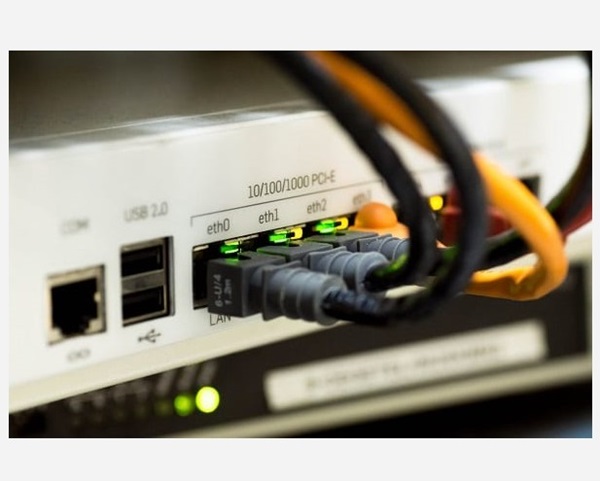BALTIMORE, MD—In an age where reliable internet has become as important as electricity or running water, millions of Americans still struggle with slow speeds, high costs, and limited access. Whether you’re working from home, attending virtual classes, or simply trying to stream your favorite show, your location within the United States dramatically affects your digital experience.
A new study has ranked all 50 US states by internet accessibility, revealing stark disparities in how Americans connect to the digital world. 1000 Mines, an online gaming platform that modernizes the classic Minesweeper experience, conducted this comprehensive analysis to understand how internet quality varies across the country.
“As a gaming platform, we see firsthand how internet quality affects user experience,” says Neal Taparia, Founder of 1000 Mines. “Poor connectivity creates real barriers for education, work, and staying connected with family.”
The Study
1000 Mines analyzed data from 2023-2025 to create an Internet Accessibility Score for each state, combining four important factors:
- Average Internet Speed (Mbps)
- Average Monthly Internet Cost
- Percentage of Households Without Internet Access
- Per Capita Investment in Broadband Infrastructure – calculated based on how much each state received from the $42.5 billion federal Broadband Infrastructure Plan, then divided per 100,000 residents
Each factor was weighted based on its impact on overall accessibility, with household access rates receiving the highest importance in the total score.
Table 1: Top 10 States With The Best Internet Access
| Rank | State | Average Internet Speed (Mbps) | Average Internet Cost | Households Without Internet Access (%) | Internet Investment Per 100,000 | Internet Accessibility Score |
| 1 | Delaware | 469.7 | $34.99 | 3.70% | $10,094,376.54 | 68.84 |
| 2 | Massachusetts | 401.2 | $34.99 | 1.30% | $2,045,894.67 | 67.65 |
| 3 | Maryland | 506.7 | $42.50 | 2.50% | $4,243,497.79 | 66.80 |
| 4 | Virginia | 505.6 | $35.00 | 7.70% | $16,668,987.17 | 66.03 |
| 5 | Pennsylvania | 430.8 | $34.99 | 4.90% | $8,841,673.94 | 65.12 |
| 6 | New Jersey | 427.8 | $37.49 | 3.50% | $2,740,468.76 | 64.46 |
| 7 | New York | 397.7 | $34.99 | 3.90% | $3,323,573.18 | 64.08 |
| 8 | Rhode Island | 433.3 | $49.99 | 0.50% | $9,696,734.79 | 62.21 |
| 9 | Nevada | 334.6 | $40.00 | 2.30% | $12,548,033.31 | 61.53 |
| 10 | Arizona | 396.1 | $35.00 | 7.00% | $12,911,411.87 | 61.15 |
- Delaware Leads With Balanced Excellence
Delaware takes the top spot with a score of 68.84, combining impressive speeds of 469.7 Mbps with affordable pricing at $34.99 monthly. The state maintains low household disconnection rates at 3.70% while receiving substantial federal investment of $10.1 million per 100,000 residents.
“Delaware shows how smart infrastructure investment pays off,” notes Taparia. “When you combine reasonable costs with reliable speeds, more families can participate in the digital economy.”
- Massachusetts Excels in Connectivity
Massachusetts ranks second with 67.65 points, achieving the lowest percentage of households without internet access at 1.30%. Despite receiving less federal investment ($2.0 million per 100,000), the state maintains competitive speeds of 401.2 Mbps and matches Delaware’s $34.99 pricing.
- Maryland Balances Speed and Investment
Maryland secures third place with 66.80 points, boasting the highest average speed among top performers at 506.7 Mbps. While monthly costs reach $42.50, strong federal investment of $4.2 million per 100,000 residents helps maintain accessibility with only 2.50% of households lacking internet.
“The top three states demonstrate that success comes from different approaches,” explains Taparia. “Whether through aggressive pricing, infrastructure investment, or achieving universal coverage, these states prove that quality internet access is achievable.”
Table 2: Top 10 States With The Worst Internet Access
| Rank | State | Average Internet Speed (Mbps) | Average Internet Cost | Households Without Internet Access (%) | Internet Investment Per 100,000 | Internet Accessibility Score |
| 1 | Montana | 110.5 | $45.00 | 24.80% | $55,020,626.91 | 22.89 |
| 2 | West Virginia | 273.2 | $37.50 | 29.50% | $68,427,710.71 | 30.87 |
| 3 | Mississippi | 226 | $42.50 | 21.10% | $40,896,849.49 | 33.01 |
| 4 | Arkansas | 230.4 | $42.50 | 18.90% | $32,965,074.92 | 35.08 |
| 5 | Kentucky | 261.8 | $47.50 | 14.80% | $23,478,973.59 | 37.77 |
| 6 | Wyoming | 203.2 | $54.98 | 12.30% | $58,945,475.16 | 39.05 |
| 7 | South Dakota | 191.7 | $54.95 | 7.40% | $22,257,806.54 | 39.82 |
| 8 | Idaho | 230.1 | $50.00 | 11.50% | $28,701,860.61 | 40.03 |
| 9 | Alaska | 285.1 | $57.50 | 21.30% | $136,757,172.00 | 40.60 |
| 10 | Vermont | 408.2 | $48.48 | 17.70% | $35,310,934.36 | 42.00 |
Bottom Three Reveal Infrastructure Gaps
Montana struggles at the bottom with 22.89 points, where 24.80% of households lack internet access. The state’s connectivity challenges have led to substantial federal investment of $55.0 million per 100,000 residents, but speeds remain low at 110.5 Mbps while costs reach $45.00 monthly.
“Montana’s situation highlights a key challenge,” says Taparia. “Rural geography makes infrastructure expensive and difficult to deploy, even with substantial federal funding.”
West Virginia follows closely behind at 30.87 points, facing the highest household disconnection rate nationwide at 29.50%. These severe connectivity gaps have resulted in the highest federal investment per capita at $68.4 million per 100,000 residents.
Mississippi rounds out the bottom three with 33.01 points, where 21.10% of households remain disconnected. The state’s infrastructure needs have attracted $40.9 million per 100,000 residents in federal investment, but speeds average only 226.0 Mbps with costs at $42.50 monthly.
“These states show that geographic and infrastructure challenges require sustained investment,” notes Taparia. “The federal funding reflects the urgent need to bridge these digital divides.”
Neal Taparia, Founder of 1000 Mines, commented:
“The digital divide revealed in this study has real consequences for millions of Americans. When nearly a third of households in West Virginia lack internet access, we’re talking about children who can’t complete online homework and workers who can’t access remote job opportunities.
“Policymakers need to approach this challenge from multiple angles. First, continue expanding broadband infrastructure funding with better coordination between federal investment and local implementation. States like Montana show that money alone isn’t enough – we need targeted strategies for rural deployment.
“Second, affordability programs that subsidize internet costs for low-income families could immediately improve access rates. Competition among internet service providers also drives down costs.
“Finally, digital literacy programs should accompany infrastructure investment. The gap between Delaware’s 68.84 score and Montana’s 22.89 represents fundamental inequalities in opportunity. Closing this divide should be a national priority.”


